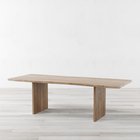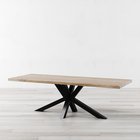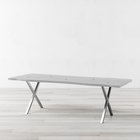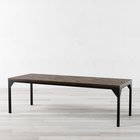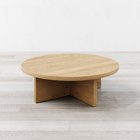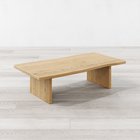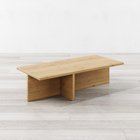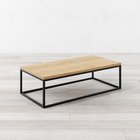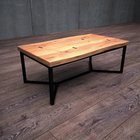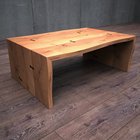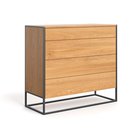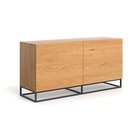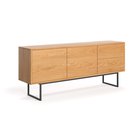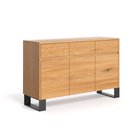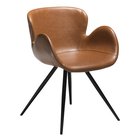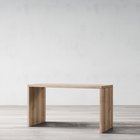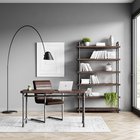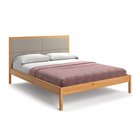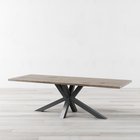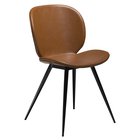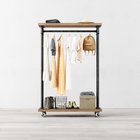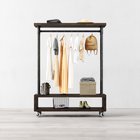The legs of a dining table or desk are one of the most important design elements. They significantly influence both aesthetics and functionality. When selecting table legs, consider the style you want to achieve, weight capacity, legroom needed, and your budget.
With so many options available, from sleek metal pedestals to intricate hand-carved wood, it can be challenging to determine which are best for your needs. This guide covers the most popular dining table legs styles to help choose the perfect fit.
Wooden Legs
Wood legs provide a timeless, classic look suitable for many homes. Options range from simple squared-off legs to elegantly shaped cabriole legs with carved detailing. Dining table legs wood match well with traditional sets but also look modern on mixed material tables pairing wood with steel or glass.
Pros:
- Warm, natural aesthetic
- Variety of styles to suit any decor
- Softer footprint than metal legs
Cons:
- Not as durable as metal
- Prone to scratches and dents
- Can be bulky on smaller tables
Metal Legs
From brushed nickel to black powder-coated steel, metal legs give a table a bold, contemporary style. Metal offers more flexibility in sculptural shapes like curved legs or asymmetric angular model. Metal also provides excellent durability for busy households.
Pros:
- Sleek, modern look
- Very durable
- Large shape selection
- Small footprint for compact tables
Cons:
- Impersonal feel
- More prone to showing scratches
- Can feel cold in some spaces
Hairpin Legs
Hairpin legs offer a lightweight, minimalist look. Their slender "U" shape and gentle footprint keep them visually unobtrusive. Hairpin legs work well in small spaces, with glass or butcher block tops, and alongside mid-century or Scandinavian-inspired decor. They come in a range of metal finishes and heights.
Pros:
- Space-saving slim profile
- Visually lightweight appearance
- Budget-friendly cost
Cons:
- Less durable than thicker table legs
- Provide less stability on larger tables
- Limited style/shape options
Pedestal Base
A pedestal base replaces four legs with a single centered leg for completely unobstructed legroom. The column-like pedestal supports the tabletop while keeping a streamlined, minimalist look. Pedestal furniture creates the illusion of floating tabletops.
Pros:
- Open, roomy leg space
- Streamlined appearance
- Easy to clean underneath
Cons:
- Not as stable on larger or longer tables
- Restricts some table shapes
X-Cross Support
For bench seating or large pieces, consider a set of X-shaped cross supports. The crisscross base connects both lengthwise and side-to-side for superior stability on oversized tables while maintaining legroom for multiple guests.
Pros:
- Provides excellent stability
- Industrial, rustic visual
- Allows bench seating access
Cons:
- Bulky, heavy aesthetic
- Not ideal for compact spaces
Leg Height Adjustability
Another factor to consider is whether you want adjustable-height legs. Many modern furniture companies offer table legs that can be manually or electronically raised and lowered to customize the height as needed. This allows tailoring for everything from casual dining to working on a laptop to entertaining guests. Adjustable height legs are especially useful for families accommodating both adults and children. They can also transition a table between a kitchen height of 36 inches for meal prep and a standard dining height of around 30 inches for eating. The flexibility of legs enables more versatility than a single table.
Tips to Choose Table Legs
- Consider the style and decor of your room - table legs can make a statement, so pick something that enhances your overall aesthetic. Metal legs in black or chrome work well with modern styles, while wood legs fit better in traditional spaces.
- Factor in legroom and seating - make sure there is enough clearance between table legs and chairs for people to sit comfortably. Measure the dimensions of chairs to determine adequate spacing.
- Select the right height - standard table heights are 28-30 inches. Bar-height tables need taller legs around 40-42 inches high. Measure the exact height you need.
- Choose sturdy, durable materials - wood and metal legs are strongest. Wood needs protection from scratches; metal should be finished to prevent chipping. Avoid hollow legs or plastic.
- Weigh stability needs - heavier tops or longer tables need stronger support. Cross-shaped bases or wider-set legs provide maximum stability.
- Consider attachments - some items have detachable legs while others are permanently attached. Detachable makes moving and storage easier.
- Check weight capacity - know how much weight the legs can handle without buckling. Sturdier tables need thicker legs.
- Get the right number of legs - three legs can wobble; four is best for stability. Pedestal bases work for small, light tables.
Choosing what works best comes down to weighing strengths against drawbacks for your personal space and style. Take measurements to ensure enough legroom clearance. Read reviews for insights on durability and quality. With a little forethought, you can confidently select a table leg design to match your home decor.

